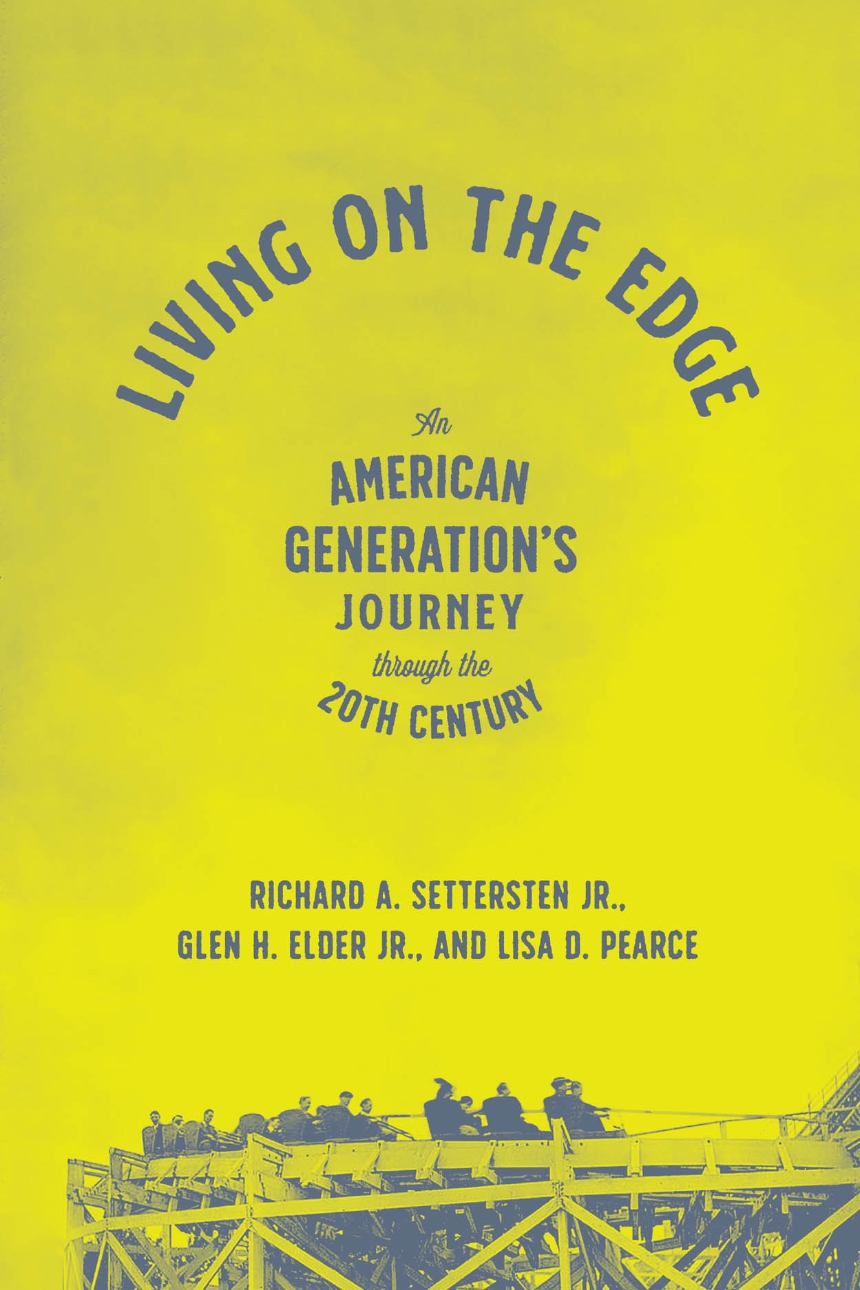Living on the Edge
An American Generation’s Journey through the Twentieth Century
9780226748122
9780226748092
9780226748269
Living on the Edge
An American Generation’s Journey through the Twentieth Century
History carves its imprint on human lives for generations after. When we think of the radical changes that transformed America during the twentieth century, our minds most often snap to the fifties and sixties: the Civil Rights Movement, changing gender roles, and new economic opportunities all point to a decisive turning point. But these were not the only changes that shaped our world, and in Living on the Edge, we learn that rapid social change and uncertainty also defined the lives of Americans born at the turn of the twentieth century. The changes they cultivated and witnessed affect our world as we understand it today.
Drawing from the iconic longitudinal Berkeley Guidance Study, Living on the Edge reveals the hopes, struggles, and daily lives of the 1900 generation. Most surprising is how relevant and relatable the lives and experiences of this generation are today, despite the gap of a century. From the reorganization of marriage and family roles and relationships to strategies for adapting to a dramatically changing economy, the challenges faced by this earlier generation echo our own time. Living on the Edge offers an intimate glimpse into not just the history of our country, but the feelings, dreams, and fears of a generation remarkably kindred to the present day.
Drawing from the iconic longitudinal Berkeley Guidance Study, Living on the Edge reveals the hopes, struggles, and daily lives of the 1900 generation. Most surprising is how relevant and relatable the lives and experiences of this generation are today, despite the gap of a century. From the reorganization of marriage and family roles and relationships to strategies for adapting to a dramatically changing economy, the challenges faced by this earlier generation echo our own time. Living on the Edge offers an intimate glimpse into not just the history of our country, but the feelings, dreams, and fears of a generation remarkably kindred to the present day.
392 pages | 5 halftones, 4 line drawings, 14 tables | 6 x 9 | © 2021
History: American History
Sociology: Demography and Human Ecology, Social History, Sociology--Marriage and Family
Reviews
Table of Contents
Part 1 Entering an Uncharted World
1 Americans in a New Century: The 1900 Generation
Part 2 Making a Life: 1910–30
2 California, Here We Come!
3 Men on Their Way
4 Becoming Women
5 Together and Apart in Marriage
Part 3 The Depression Years: The Worst and Best of Times
6 Misfortune and Privilege
7 Hard Times Turned Bad
8 Having Children in Troubled Times
9 In the Midst of Kin
Part 4 War on the Home Front
10 War’s Impact at Home
11 Women at Work
12 From Generation to Generation
Part 5 Transforming Times and Lives
13 The Past in Later Life
Acknowledgments
Appendix A: Additional Tables and Figures
Appendix B: The Sample, Data Sources, and Methods
Appendix C: The Story of the Project, 1962–2019
Notes
Index
1 Americans in a New Century: The 1900 Generation
Part 2 Making a Life: 1910–30
2 California, Here We Come!
3 Men on Their Way
4 Becoming Women
5 Together and Apart in Marriage
Part 3 The Depression Years: The Worst and Best of Times
6 Misfortune and Privilege
7 Hard Times Turned Bad
8 Having Children in Troubled Times
9 In the Midst of Kin
Part 4 War on the Home Front
10 War’s Impact at Home
11 Women at Work
12 From Generation to Generation
Part 5 Transforming Times and Lives
13 The Past in Later Life
Acknowledgments
Appendix A: Additional Tables and Figures
Appendix B: The Sample, Data Sources, and Methods
Appendix C: The Story of the Project, 1962–2019
Notes
Index
Awards
The Gerontological Society of America: Richard Kalish Innovative Publication Award
Won
